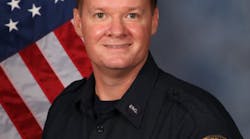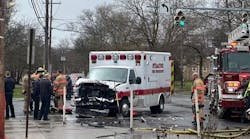Aside from traditions and job responsibilities, one aspect of the fire service that hasn't changed is the physical demand on our bodies. Young or old, new or experienced, the fact remains that our bodies get roughed up at some point. There's not much of a way around that. But have we learned how to deal with the physical stress?
Teamwork has been the essence of the fire service since its beginning. When we're called to a scene, we rely on each other to work efficiently, complete tasks and watch out for each other's safety. We train together, eat at the same time, and spend hours sharing stories and good times. So, in the spirit of teamwork, let's help each other with one more task.
Firefighter conditioning programs are gaining popularity nationwide and many fire departments have implemented their own or borrowed the set up from more established systems. However, there are still a percentage of us who say, "Yeah, I need to get into shape" or "Yeah, I'll start running on Monday" without ever breaking bad habits and stepping foot into the gym. Some departments are ahead and some are behind, but we continue to lose our fellow brothers and sisters to heart attacks and strokes. If the playing field were level in this area and every department had a program, do you think the statistics would be different?
In the perfect world, every department would have an area within each firehouse with appropriate equipment encouraging firefighters to exercise. Firefighters would be willing to get stress tests, medical exams and relevant pre-exercise assessments. Firefighters would give up unhealthy habits and eating routines. And firefighters wouldn't be afraid to exercise in fear they'll be punished by not meeting certain standards. That would be great, but there are several issues, an important one being budget, that prevent this from happening. Is conditioning an administrative or frontline responsibility? Many questions must be answered, and there's no better time than now to start finding the right ones.
In an effort to level the playing field, this column will interview fire departments that are willing to share information about their fitness programs. The premise is to disseminate the information to help other departments create better programs or get the wheels turning and begin to push for some type of program. Just as we learn from others about how to vent roofs, force doors, extricate patients from cars and attack fire, we can help each other learn how to make exercise a necessary part of the fire service.
Each month, this column will strive to achieve these three goals with each interview:
1. Share information. General information about each fire department and how many firefighters participate in the program, type of equipment, assessment used, who's the watchdog, allotted time for exercise and so forth.
2. Learn from others. Here we'll discuss the do's and the don'ts, what's worked, what hasn't worked, who's in favor versus who's not in favor, community perspective, feedback from firefighters and more.
3. Motivate as many as possible. We want to ask how we can do better. What benefits has your department experienced? How much effort does it take to get firefighters to use the program? How do you plan on keeping motivation high? What are the rewards of the program?
Again, the idea is to reach as many departments as possible and encourage them to set up conditioning programs to help break the mentality that we don't need to exercise. We need a viable alternative to firefighters being taken off the line because they are health risks. Health and fitness is important in the career of a firefighter, paid and volunteer. If we're going to reduce line-of-duty deaths due to heart attacks and strokes, then we must begin to share information and learn from each other. Exercise must become a priority, not just "that thing" you do to look good. We must learn the best option for each department and each firefighter and show that getting in shape is a matter of choice.
If your department has a program and would like to share it with Firehouse® Magazine, please contact me by e-mail at [email protected]. Interviews will be conducted in person or by telephone. If your department is just beginning a new program, we want to hear about it. Send me an e-mail as well. We'd also like to see photos of your exercise areas and equipment along with some exercises unique to your department.
It's time to level the playing field of fitness. Who's with me?
RICH MEYER, CSCS, USAW is the author of FAST Responders: The ULTIMATE Guide to Firefighter Conditioning and The Firefighter's Wellness Handbook. He is a former firefighter, rescue technician and EMT-B with the Bloomfield, NJ, Volunteer Fire-Rescue Company and owns FASTBODIES Fitness and Performance. Meyer can be reached at [email protected]. For a free training journal, visit his website at www.functionalfirefitness.com.





